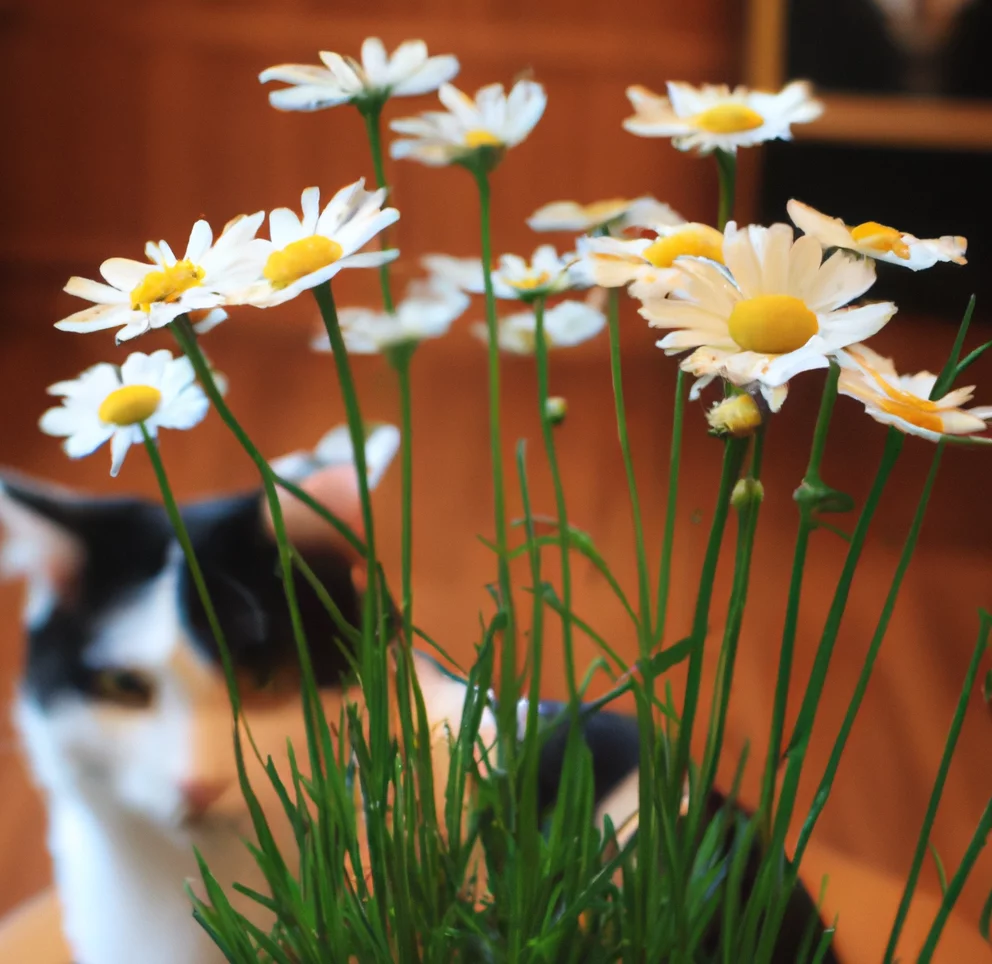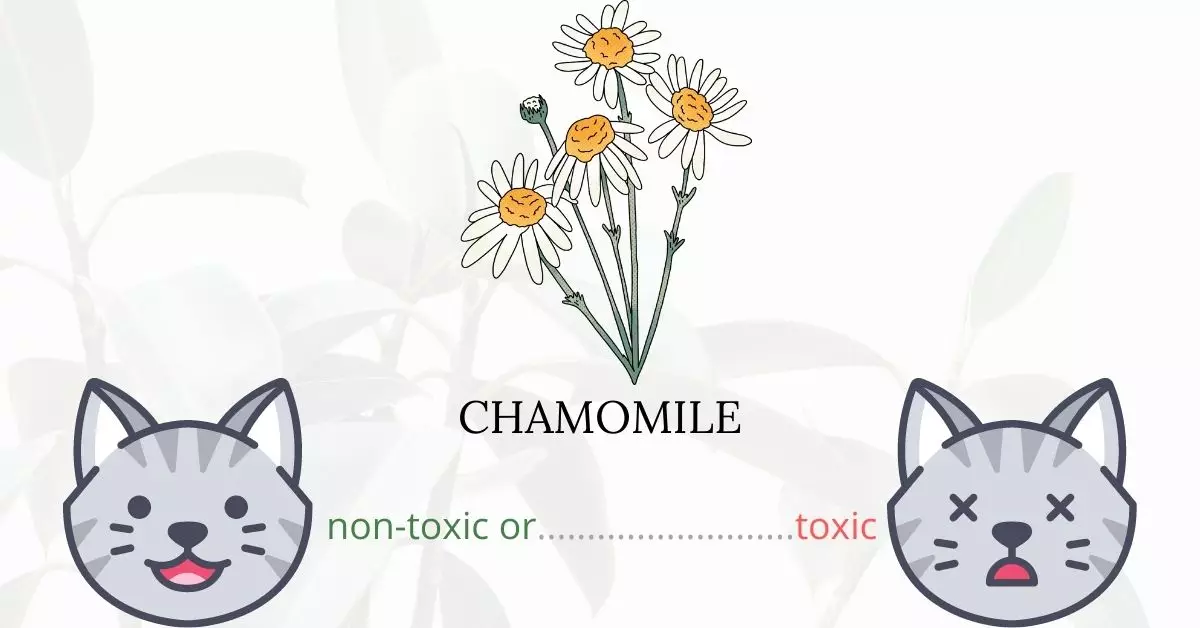Chamomile, also known by various common names such as Manzanilla, Garden Chamomile, Roman Chamomile, True Chamomile, Corn Feverfew, Barnyard Daisy, Ground-apple, and Turkey-weed, has been historically recognized for its medicinal properties. However, it’s essential to understand that when consumed in large quantities, chamomile can be harmful to cats. Some compounds found in chamomile, such as volatile oil, bisabolol, chamazulene, anthemic acid, and tannic acid, have the potential to cause allergic reactions, diarrhea, vomiting, and bleeding in cats if ingested consistently over time.
This article was crafted in collaboration with a team of experienced DVMs (doctors of veterinary medicine). Their invaluable insights ensure that we provide accurate and up-to-date information about the potential risks plants like chamomile may pose to cats. Furthermore, to bolster our findings, we extensively referenced high-authority websites, including the ASPCA and PetMD.
Clinical Signs of Chamomile Poisoning in Cats

If a cat has been exposed to, or ingested, chamomile, it may exhibit a range of clinical symptoms due to the various compounds present in the plant. Each symptom can be attributed to specific toxic principles within chamomile, and here’s a breakdown:
- Anorexia: A cat might lose its appetite after consuming chamomile. This could be due to gastrointestinal discomfort caused by the plant’s ingredients, especially if consumed in large amounts.
- Diarrhea: The ingestion of chamomile can irritate the cat’s gastrointestinal tract, leading to diarrhea. Compounds such as anthemic acid and tannic acid can be particularly troublesome if ingested.
- Vomiting: This is a body’s natural response to expel harmful substances. Ingesting chamomile, especially its volatile oils and bisabolol, can trigger this reaction in cats as their bodies try to remove the irritant.
- Dermatitis: Simply coming in contact with chamomile, whether by touching or smelling, might cause skin reactions in some cats. The chamazulene in chamomile can sometimes cause allergic skin reactions, leading to dermatitis. This is a sign that the cat’s skin is reacting to the plant’s compounds.
It’s essential to observe your cat for these signs if you suspect it has come into contact with or ingested chamomile, and consult a veterinarian if symptoms persist or worsen.
First Aid and Treatment of Chamomile Poisoning in Cats

Treating chamomile poisoning in cats requires eliminating the plant’s toxin from the cat’s system. The veterinarian will most likely inject activated charcoal if your cat has not vomited yet. Activated charcoal binds to the poisonous substance, preventing the cat’s body from absorbing the plant compounds further. The vet may also prescribe medications such as Kapectolin and Sucralfate for your cat’s stomach.
Recovery from Chamomile Poisoning in Cats

Just like in all cases of plant poisoning, as long as the cat received immediate and proper treatment, he or she will fully recover quickly. In chamomile poisoning cases, most cats recover completely within 24 hours.
Prevention of Chamomile Poisoning in Cats
Cat owners should avoid bringing chamomile inside their homes and even growing them in their gardens and yards to prevent poisoning in their cats. Build fences and install safety nets in the surroundings of your house to restrict your cat from straying away.
If you love plants but have cats at home, check out these lists:





